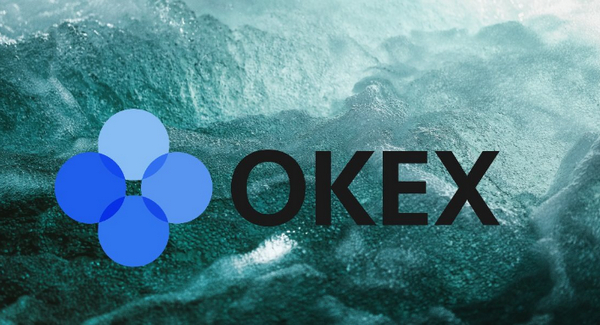-
 Bitcoin
Bitcoin $87,356.7866
2.55% -
 Ethereum
Ethereum $1,638.7142
1.49% -
 Tether USDt
Tether USDt $1.0000
0.00% -
 XRP
XRP $2.1170
1.59% -
 BNB
BNB $603.9416
1.60% -
 Solana
Solana $140.7449
-0.10% -
 USDC
USDC $1.0000
0.01% -
 Dogecoin
Dogecoin $0.1612
1.47% -
 TRON
TRON $0.2446
0.70% -
 Cardano
Cardano $0.6403
1.48% -
 Chainlink
Chainlink $13.5386
3.52% -
 UNUS SED LEO
UNUS SED LEO $9.4122
0.71% -
 Avalanche
Avalanche $19.9770
0.38% -
 Stellar
Stellar $0.2522
2.41% -
 Toncoin
Toncoin $3.0278
0.79% -
 Shiba Inu
Shiba Inu $0.0...01274
3.15% -
 Sui
Sui $2.2177
2.58% -
 Hedera
Hedera $0.1707
2.77% -
 Bitcoin Cash
Bitcoin Cash $338.7540
-0.36% -
 Polkadot
Polkadot $3.9033
-0.91% -
 Hyperliquid
Hyperliquid $18.1086
-1.54% -
 Litecoin
Litecoin $78.6965
2.64% -
 Bitget Token
Bitget Token $4.5466
-0.88% -
 Dai
Dai $0.9999
0.00% -
 Ethena USDe
Ethena USDe $0.9993
0.02% -
 Pi
Pi $0.6368
-2.12% -
 Monero
Monero $215.6237
-0.53% -
 Uniswap
Uniswap $5.4295
1.63% -
 Pepe
Pepe $0.0...07859
4.81% -
 Aptos
Aptos $5.1258
4.53%
How to make money from OKX contract trading
Contract trading involves using leverage to speculate on price fluctuations without owning the underlying asset, offering both higher potential profits and risks.
Nov 07, 2024 at 02:53 pm

Step 1: Understand Contract Trading
Contract trading involves speculating on the price fluctuations of an underlying asset without owning it physically. Unlike spot trading, contract trading allows traders to use leverage, which amplifies potential profits (and losses). OKX offers a wide range of perpetual contracts with different leverage levels, allowing traders to tailor their risk exposure.
To delve into contract trading, it's essential to grasp key concepts:
- Contract Size: The number of underlying assets represented by each contract.
- Ticker: A unique identifier for each contract, typically consisting of the underlying asset, expiration date, and leverage level (e.g., BTC-USD-SWAP).
- Leverage: The multiplier that amplifies the trader's position size. Higher leverage increases potential profits but also magnifies risks.
- Margin: A portion of the trader's account balance set aside as collateral to cover potential losses. Higher leverage requires higher margin.
Step 2: Open an OKX Account
To start contract trading on OKX, you'll need to:
- Create an account: Provide personal and financial information to establish an account.
- Verify your identity: Complete Know-Your-Customer (KYC) procedures to verify your identity and meet regulatory requirements.
- Fund your account: Deposit funds into your account through various supported methods, such as bank transfer, credit card, or cryptocurrency.
Step 3: Choose a Contract
OKX offers a diverse selection of perpetual contracts covering numerous cryptocurrencies, commodities, and other assets.
When choosing a contract:
- Consider the underlying asset: Research the market trend and volatility of the underlying asset.
- Select leverage wisely: Assess your risk tolerance and choose a leverage level that aligns with your trading strategy.
- Manage risk exposure: Monitor your open positions and utilize risk management tools such as stop-loss orders to limit potential losses.
Step 4: Place an Order
To execute a contract trade:
- Decide the order type: Choose from various order types, including market orders (executed immediately), limit orders (executed when the market price reaches a specified level), and stop-limit orders (executed when the market price crosses a certain threshold).
- Set the parameters: Specify the contract quantity, leverage level (if applicable), order price (for limit orders), and take-profit or stop-loss levels (optional).
- Submit the order: Confirm the order details and submit it to the exchange for execution.
Step 5: Monitor and Manage Positions
Once an order is executed, it's crucial to:
- Monitor market movements: Keep track of price fluctuations and market news to gauge the performance of your trades.
- Adjust positions: Modify or close open positions based on market conditions to maximize profits or minimize losses.
- Manage risk: Utilize stop-loss orders to limit potential losses, monitor your margin balance, and adjust leverage accordingly.
Step 6: Withdraw Profits
After generating profits from contract trading, you can withdraw them in several ways:
- Convert to spot assets: Sell your contract positions and convert the proceeds into spot cryptocurrencies, such as Bitcoin (BTC) or Ethereum (ETH).
- Withdraw funds: Once converted, you can withdraw funds from your OKX account to your bank account, crypto wallet, or other supported destination.
Additional Tips for Profitable Contract Trading:
- Educate yourself: Continuously educate yourself about contract trading concepts, market dynamics, and risk management strategies.
- Practice with a demo account: Test your strategies and hone your skills without risking real capital.
- Start small: Begin with small trades and gradually increase position sizes as your confidence and experience grow.
- Manage emotions: Avoid trading based on emotions. Stick to your trading plan and manage your risk exposure effectively.
- Diversify portfolio: Spread your trades across multiple contracts to reduce overall risk.
Disclaimer:info@kdj.com
The information provided is not trading advice. kdj.com does not assume any responsibility for any investments made based on the information provided in this article. Cryptocurrencies are highly volatile and it is highly recommended that you invest with caution after thorough research!
If you believe that the content used on this website infringes your copyright, please contact us immediately (info@kdj.com) and we will delete it promptly.
- An Aptos community member submitted a proposal to slash staking rewards for the network's native token
- 2025-04-21 13:50:14
- The Ultimate Guide to BTFD Coin (BTFD): ROI Potential, Presale Stages, and More
- 2025-04-21 13:50:14
- TRON (TRX) Price Broke Above Descending Trendline Resistance Targeting $0.2800
- 2025-04-21 13:45:14
- VOXEL token price skyrockets by more than 50% after a BitGet malfunction causes the VOXE/USDT perpetual contract to surpass that of Bitcoin
- 2025-04-21 13:45:14
- Why Is Least Privilege Fundamental to Creating Safe Environments?
- 2025-04-21 13:40:14
- Top Crypto Gainers Today - JUP, WAVES, FXS, and DOT Are Outperforming the Market
- 2025-04-21 13:40:14
Related knowledge

Is it a risk that SHIB's derivatives position is 3 times that of the spot?
Apr 20,2025 at 12:35am
Is it a risk that SHIB's derivatives position is 3 times that of the spot? The cryptocurrency market is known for its volatility and high-risk nature, and Shiba Inu (SHIB) is no exception. One of the metrics that traders and investors closely monitor is the ratio of derivatives to spot positions. SHIB's derivatives position being three times that of the...

What does SHIB's Cardano coefficient below 0.3 indicate?
Apr 19,2025 at 08:00am
What does SHIB's Cardano coefficient below 0.3 indicate? The Cardano coefficient, often used within the cryptocurrency community, is a metric that helps investors and analysts understand the correlation between different cryptocurrencies. When it comes to SHIB (Shiba Inu) and its Cardano coefficient falling below 0.3, this indicates a relatively low cor...

Is SHIB's TVL suddenly increasing by 20% a positive signal?
Apr 20,2025 at 08:07am
The sudden increase of SHIB's TVL (Total Value Locked) by 20% has sparked a lot of interest and speculation within the cryptocurrency community. TVL is an important metric that represents the total amount of assets locked in a DeFi protocol, indicating the level of user engagement and trust in the platform. In this article, we will explore whether this ...

What does SHIB's exchange inventory ratio hit a new low mean?
Apr 21,2025 at 02:50am
The term 'exchange inventory ratio' refers to the percentage of a cryptocurrency's total supply that is held on exchanges. When we say that SHIB's exchange inventory ratio hit a new low, it means that the proportion of Shiba Inu (SHIB) tokens held on cryptocurrency exchanges has reached its lowest point in a given period. This metric is significant beca...

Should SHIB's MVRV ratio break through 5 and stop profit in batches?
Apr 20,2025 at 11:35pm
The MVRV (Market Value to Realized Value) ratio is a key metric used in the cryptocurrency market to assess whether a particular asset is overvalued or undervalued. For Shiba Inu (SHIB), a popular meme coin, understanding the implications of its MVRV ratio breaking through the 5 threshold is crucial for investors looking to manage their portfolios effec...

What does SHIB's Coinbase premium continue to be negative mean?
Apr 21,2025 at 01:35am
The phenomenon of SHIB's Coinbase premium continuing to be negative is an intriguing aspect of the cryptocurrency market, particularly for those invested in or interested in Shiba Inu (SHIB). To understand this, it's essential to break down what the Coinbase premium is and what a negative value signifies in the context of SHIB. Understanding Coinbase Pr...

Is it a risk that SHIB's derivatives position is 3 times that of the spot?
Apr 20,2025 at 12:35am
Is it a risk that SHIB's derivatives position is 3 times that of the spot? The cryptocurrency market is known for its volatility and high-risk nature, and Shiba Inu (SHIB) is no exception. One of the metrics that traders and investors closely monitor is the ratio of derivatives to spot positions. SHIB's derivatives position being three times that of the...

What does SHIB's Cardano coefficient below 0.3 indicate?
Apr 19,2025 at 08:00am
What does SHIB's Cardano coefficient below 0.3 indicate? The Cardano coefficient, often used within the cryptocurrency community, is a metric that helps investors and analysts understand the correlation between different cryptocurrencies. When it comes to SHIB (Shiba Inu) and its Cardano coefficient falling below 0.3, this indicates a relatively low cor...

Is SHIB's TVL suddenly increasing by 20% a positive signal?
Apr 20,2025 at 08:07am
The sudden increase of SHIB's TVL (Total Value Locked) by 20% has sparked a lot of interest and speculation within the cryptocurrency community. TVL is an important metric that represents the total amount of assets locked in a DeFi protocol, indicating the level of user engagement and trust in the platform. In this article, we will explore whether this ...

What does SHIB's exchange inventory ratio hit a new low mean?
Apr 21,2025 at 02:50am
The term 'exchange inventory ratio' refers to the percentage of a cryptocurrency's total supply that is held on exchanges. When we say that SHIB's exchange inventory ratio hit a new low, it means that the proportion of Shiba Inu (SHIB) tokens held on cryptocurrency exchanges has reached its lowest point in a given period. This metric is significant beca...

Should SHIB's MVRV ratio break through 5 and stop profit in batches?
Apr 20,2025 at 11:35pm
The MVRV (Market Value to Realized Value) ratio is a key metric used in the cryptocurrency market to assess whether a particular asset is overvalued or undervalued. For Shiba Inu (SHIB), a popular meme coin, understanding the implications of its MVRV ratio breaking through the 5 threshold is crucial for investors looking to manage their portfolios effec...

What does SHIB's Coinbase premium continue to be negative mean?
Apr 21,2025 at 01:35am
The phenomenon of SHIB's Coinbase premium continuing to be negative is an intriguing aspect of the cryptocurrency market, particularly for those invested in or interested in Shiba Inu (SHIB). To understand this, it's essential to break down what the Coinbase premium is and what a negative value signifies in the context of SHIB. Understanding Coinbase Pr...
See all articles






















































































